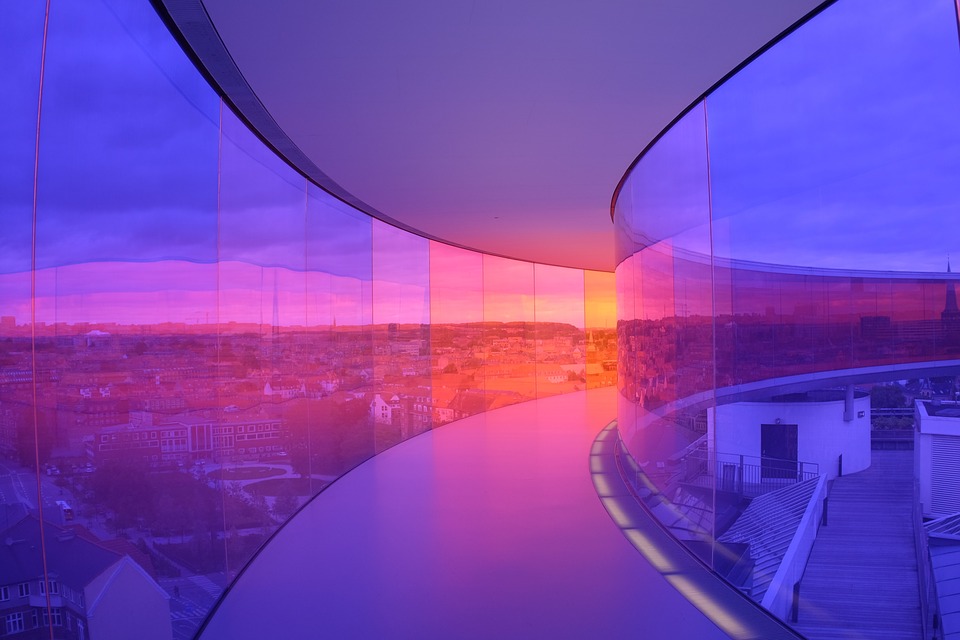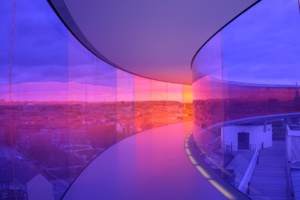Michigan State University based researchers’ team has developed a solar panel which is “fully transparent”. This marks a breakthrough as the transparent panels could be creatively put into use in architecture along with other fields like “mobile electronics” as well as “the automotive industry”. The attempts of creating “such a device” has been made earlier without satisfying results that involved “low efficiency and poor material quality”.
The Michigan State University team stressed on the transparent factor of the newly developed panels which was achieved through a “transparent luminescent solar concentrator”, in short TLSC. These concentrators can go on any “clear surface” such as window pane for they are capable of harvesting “solar energy without affecting light transmittance”.
The mentioned technology makes use of organic molecules to absorb light’s wavelength such as “infrared and ultraviolet” lights, the spectrum that is invisible to human eyes. In the words of the Assistant Professor of “chemical engineering and materials science” at College of Engineering in MSU, Richard Lunt:
“We can tune these materials to pick up just the ultraviolet and the near infrared wavelengths that then ‘glow’ at another wavelength in the infrared”.
Once, the concentrators pick light, it gets transported to the “contour of the panel” where the conversion to electricity takes place through “thin strips of photovoltaic solar cells”. In Ana Cosma’s words:
“This development would make the most out of the buildings’ facades, since the vertical footprint is often larger than the rooftop one – especially for glass towers”.
Likewise, harvesting sunlight on “Transparent Solar Panels” could become “more efficient” at the same time raising aesthetic bars without “altering the architectural design”. In fact, this technology can also be incorporated into old buildings. Currently, the energy efficiency of the TLSC is at “1%”, while the team is working to improve the same as it aims to get to a five percent efficiency. The people involved in the MSU’s research teams are: “Yimu Zhao, Benjamin Levine and Garrett Meek”. While, Ana Cosma reminded:
“As aforementioned, if developments work, applications would be countless”.
References:
arch2o.com
The Michigan State University team stressed on the transparent factor of the newly developed panels which was achieved through a “transparent luminescent solar concentrator”, in short TLSC. These concentrators can go on any “clear surface” such as window pane for they are capable of harvesting “solar energy without affecting light transmittance”.
The mentioned technology makes use of organic molecules to absorb light’s wavelength such as “infrared and ultraviolet” lights, the spectrum that is invisible to human eyes. In the words of the Assistant Professor of “chemical engineering and materials science” at College of Engineering in MSU, Richard Lunt:
“We can tune these materials to pick up just the ultraviolet and the near infrared wavelengths that then ‘glow’ at another wavelength in the infrared”.
Once, the concentrators pick light, it gets transported to the “contour of the panel” where the conversion to electricity takes place through “thin strips of photovoltaic solar cells”. In Ana Cosma’s words:
“This development would make the most out of the buildings’ facades, since the vertical footprint is often larger than the rooftop one – especially for glass towers”.
Likewise, harvesting sunlight on “Transparent Solar Panels” could become “more efficient” at the same time raising aesthetic bars without “altering the architectural design”. In fact, this technology can also be incorporated into old buildings. Currently, the energy efficiency of the TLSC is at “1%”, while the team is working to improve the same as it aims to get to a five percent efficiency. The people involved in the MSU’s research teams are: “Yimu Zhao, Benjamin Levine and Garrett Meek”. While, Ana Cosma reminded:
“As aforementioned, if developments work, applications would be countless”.
References:
arch2o.com






